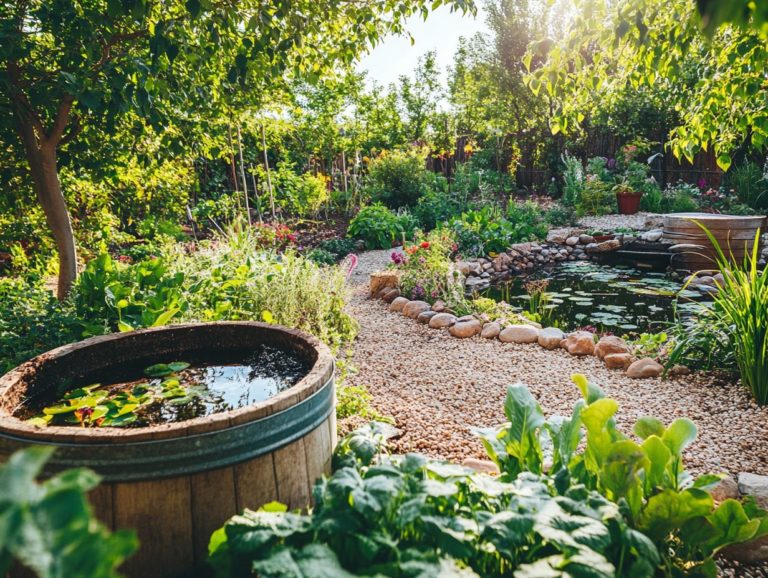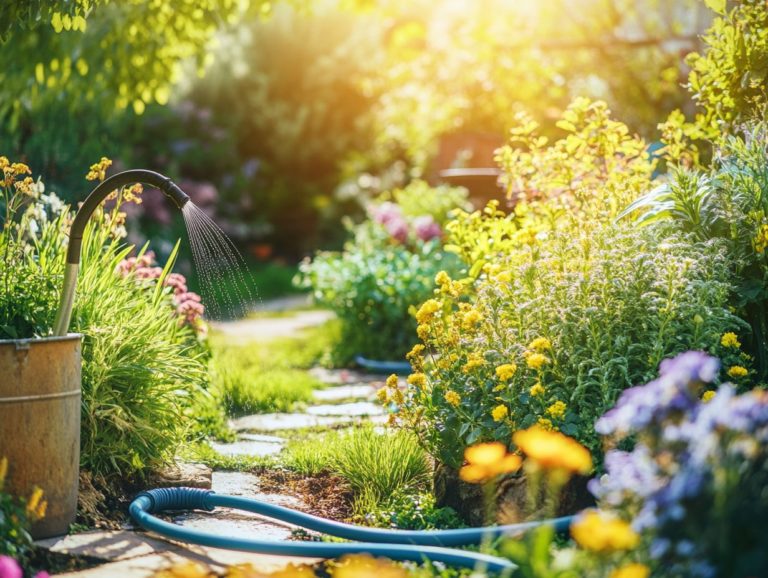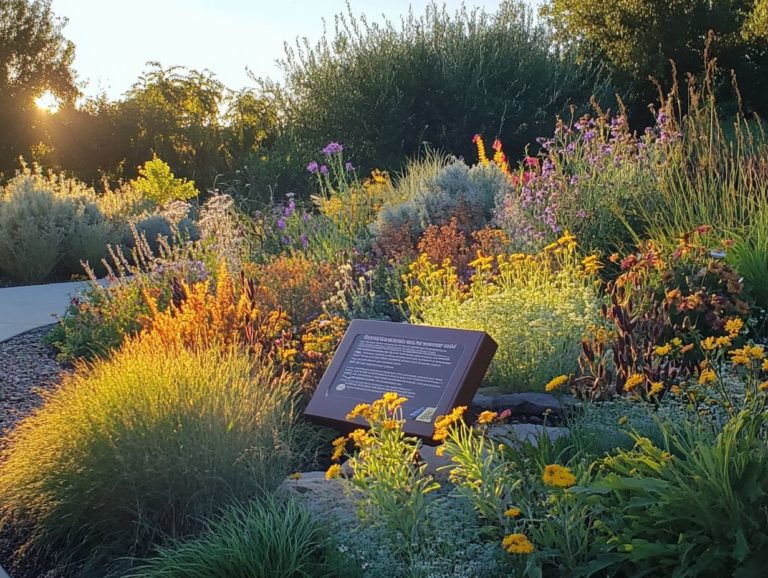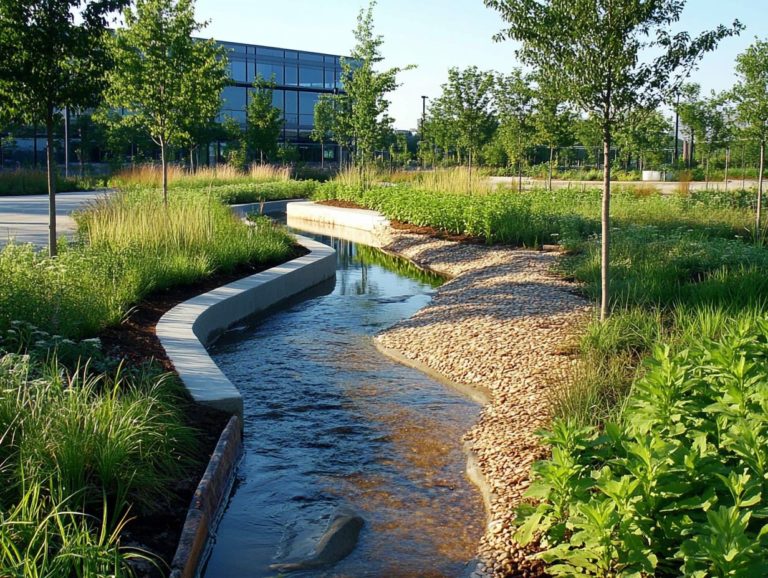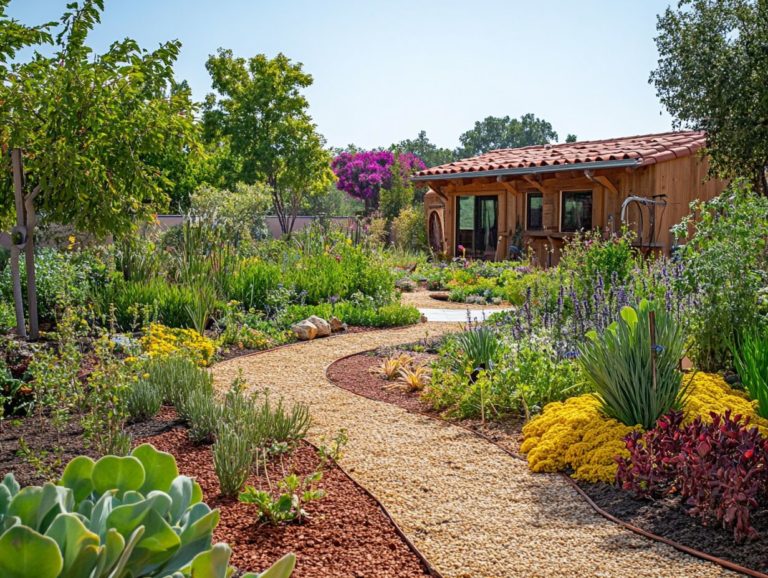How to Create a Flood-Resilient Garden
Flooding can be a gardener’s worst nightmare. Yet, with the right strategies, you can cultivate a garden that stands resilient against rising waters. Discover how flood-resilient gardening can transform your patch of earth into a protective sanctuary!
This guide offers practical tips for designing a layout that can endure heavy rainfall. From selecting the right plants to preparing for potential floods and recovering afterward, this resource equips you with everything you need to keep your garden thriving, even in challenging conditions.
Prepare to transform your outdoor space into a resilient oasis!
Contents
- Key Takeaways:
- Understanding Flood-Resilient Gardening
- Designing a Flood-Resilient Garden
- Choosing Flood-Resilient Plants
- Preparing Your Garden for a Flood
- Recovering Your Garden After a Flood
- Maintaining a Flood-Resilient Garden
- Frequently Asked Questions
- What does it mean to have a flood-resilient garden?
- Why is it important to create a flood-resilient garden?
- How can I create a flood-resilient garden?
- What are some flood-tolerant plants that I can use in my garden?
- Do I need to make any changes to my garden’s layout to make it flood-resistant?
- How can I maintain a flood-resistant garden?
Key Takeaways:
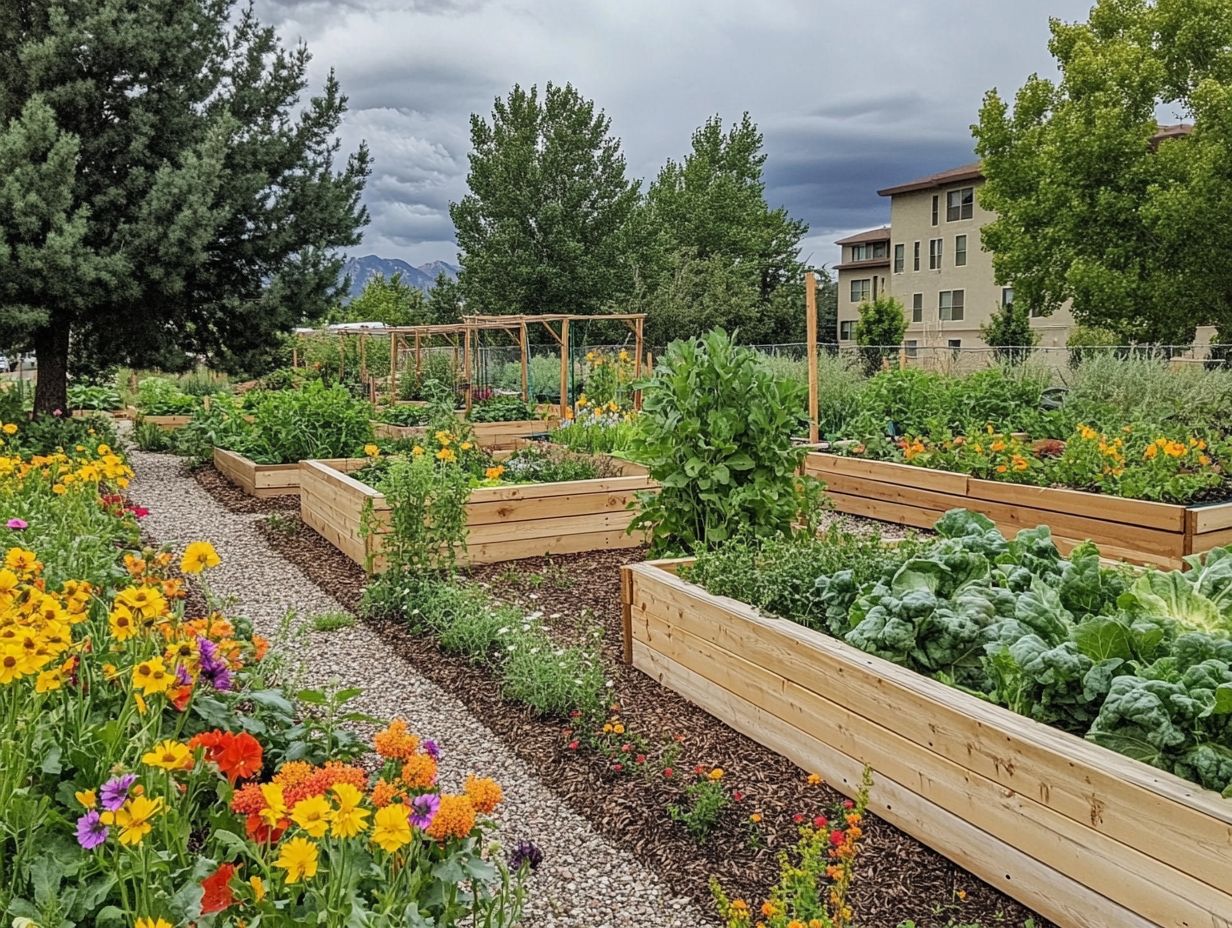
- Understand the concept of flood-resilient gardening to create a garden that can withstand flooding.
- Design your garden with elevation and drainage in mind to mitigate the effects of flooding.
- Choose flood-resistant plants and take necessary precautions before and after a flood to maintain a healthy and resilient garden.
Start your flood-resilient gardening journey today!
Understanding Flood-Resilient Gardening
Flood-resilient gardening is your ticket to a sustainable future that stands strong against the ever-increasing threat of flooding. This is especially important in an era defined by climate change and unpredictable weather patterns.
As urban environments evolve, integrating gardening methods that help prevent damage from flooding into your garden design can significantly reduce flood risk. It requires understanding essential factors like water absorption, local climate conditions, and the right plant selections.
Thought leaders such as Naomi Slade and Dr. Ed Barsley advocate for methods that boost soil health and promote effective drainage solutions. This ensures your garden flourishes and serves as a protector of your backyard and home during flood events.
What is Flood-Resilient Gardening?
Flood-resilient gardening is your proactive strategy for creating landscapes that can withstand flooding. This enhances your backyard’s protection and reduces overall flood risk. This gardening method focuses on choosing plants that can grow well in wet soil and contribute to a healthy environment.
By incorporating a diverse array of native and adaptive plants with flood-tolerant traits, you can significantly bolster your resilience against adverse weather events. Adding organic matter, like compost, is essential for improving soil health, enriching the microbial ecosystem, and boosting water retention capacity critical elements for plant survival during extended wet periods.
Features such as rain gardens effectively manage runoff, allowing excess water to be absorbed gradually. Meanwhile, proper drainage systems prevent pooling in areas where you want to keep things dry. Together, these strategies create a more sustainable and flood-proof garden, promoting biodiversity and valuable ecosystem services in the face of climate change.
Designing a Flood-Resilient Garden
Designing a flood-resilient garden requires a strategic mindset. Start by understanding the local climate conditions and selecting landscaping techniques that suit your environment.
Incorporating essential drainage features is key to creating a flood-proof sanctuary. This thoughtful approach enables your garden to effectively manage water runoff and fosters healthy plant growth. Your outdoor space can thrive even in challenging conditions.
Factors to Consider in Garden Layout
When you design a flood-resilient garden, consider various factors, like checking for flood risks, drainage features, and the local climate affecting plant growth and soil health. A well-planned garden layout optimizes water absorption and minimizes damage during extreme weather events.
Understanding the slope of your terrain is crucial because it impacts water runoff and pooling. For example, a sloped garden can benefit from terracing, which slows water movement and encourages it to seep into the ground.
It’s also essential to know your soil type whether clay, sandy, or loamy. This knowledge guides your drainage solutions and plant selections. Incorporate existing drainage features like gutters and natural ditches into your garden design.
Integrating flood-resistant elements like raised beds elevates plant roots above potential flood levels, while swales shallow channels designed to manage water flow help guide excess water. These strategies safeguard your plants, boost biodiversity, and foster healthy soil ecosystems.
Choosing Flood-Resilient Plants
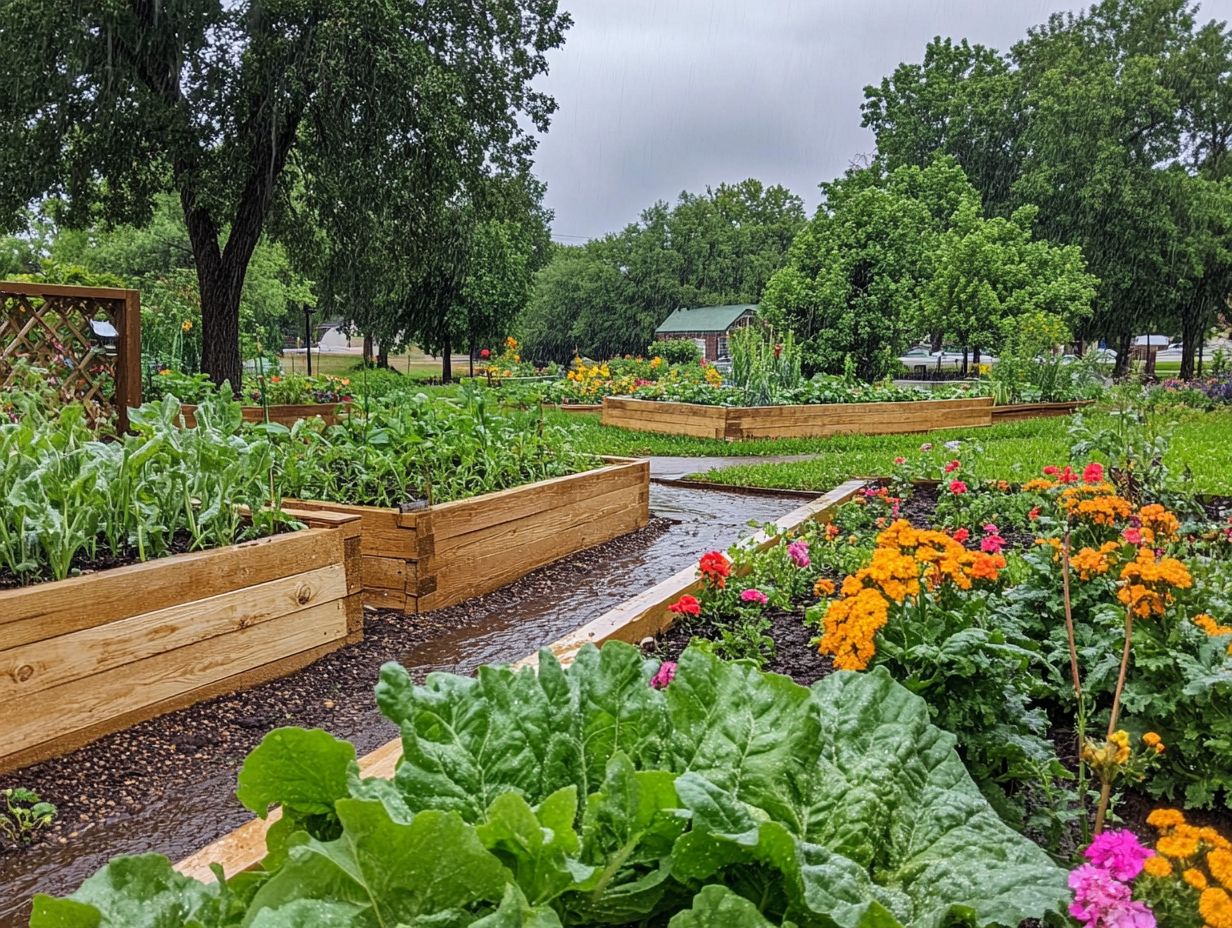
Selecting flood-resilient plants is crucial for creating a sustainable garden that can endure flooding while maximizing water absorption and enriching the soil with organic matter. These carefully chosen plants bolster your garden’s resilience against extreme weather and enhance the overall health of your landscape.
Types of Plants That Can Withstand Flooding
Several types of flood-resistant plants can withstand periodic flooding, making them exceptional choices for enhancing water absorption and enriching organic matter in your garden, especially in rain gardens. These plants flourish in wet soils, providing stunning visuals and enriching your garden’s ecosystem.
Among the most popular flood-resistant species are the Blue Flag Iris and Marsh Marigold. Both thrive in wet environments and infuse your landscape with vibrant color. The Blue Flag Iris, with its striking blue-violet blooms, grows tall and attracts pollinators, offering a sanctuary for beneficial insects. Meanwhile, the Marsh Marigold presents a cheerful display with its vibrant yellow flowers, brightening shaded areas near water.
If you seek a more ornamental touch, consider the River Birch tree. It thrives in wet soil and features stunning peeling bark, adding visual texture to your garden.
Incorporating these hardy plants enhances your garden’s resilience, supports local wildlife, and ensures smoother water flow, making them invaluable to any eco-conscious design.
Preparing Your Garden for a Flood
Get your garden ready for floods with a solid plan. This involves meticulous yard maintenance and the thoughtful installation of effective drainage features. By taking proactive measures, you can significantly minimize damage and enhance your garden’s resilience against flooding events.
Steps to Take Before a Flood
Before a flood strikes, take specific steps for effective preparation. Start with assessing your flood risk, enhancing drainage features, and performing necessary yard maintenance to protect both your garden and home. These proactive measures can significantly reduce potential damage.
Clear debris from drainage systems, as blocked drains can lead to overflow when heavy rains hit. Improve your soil structure by incorporating organic matter, allowing for better water absorption and minimizing runoff. Be strategic about plant placements, as certain plants naturally absorb excess water and can act as a buffer during tumultuous weather events.
Regular maintenance is key. Staying vigilant about yard upkeep helps you address potential issues before a storm rolls in. Tap into community resources for flood resilience; they can offer valuable knowledge and support, promoting collective efforts to safeguard against flooding.
Start preparing your garden today!
Recovering Your Garden After a Flood
Recovering your garden after a flood necessitates a strategic approach that carefully considers the extent of the damage. Focus on restoring soil health while thoughtfully selecting plants that can thrive in the altered conditions.
This recovery process is essential for reestablishing a resilient landscape that not only survives but flourishes.
How to Restore Your Garden After a Flood
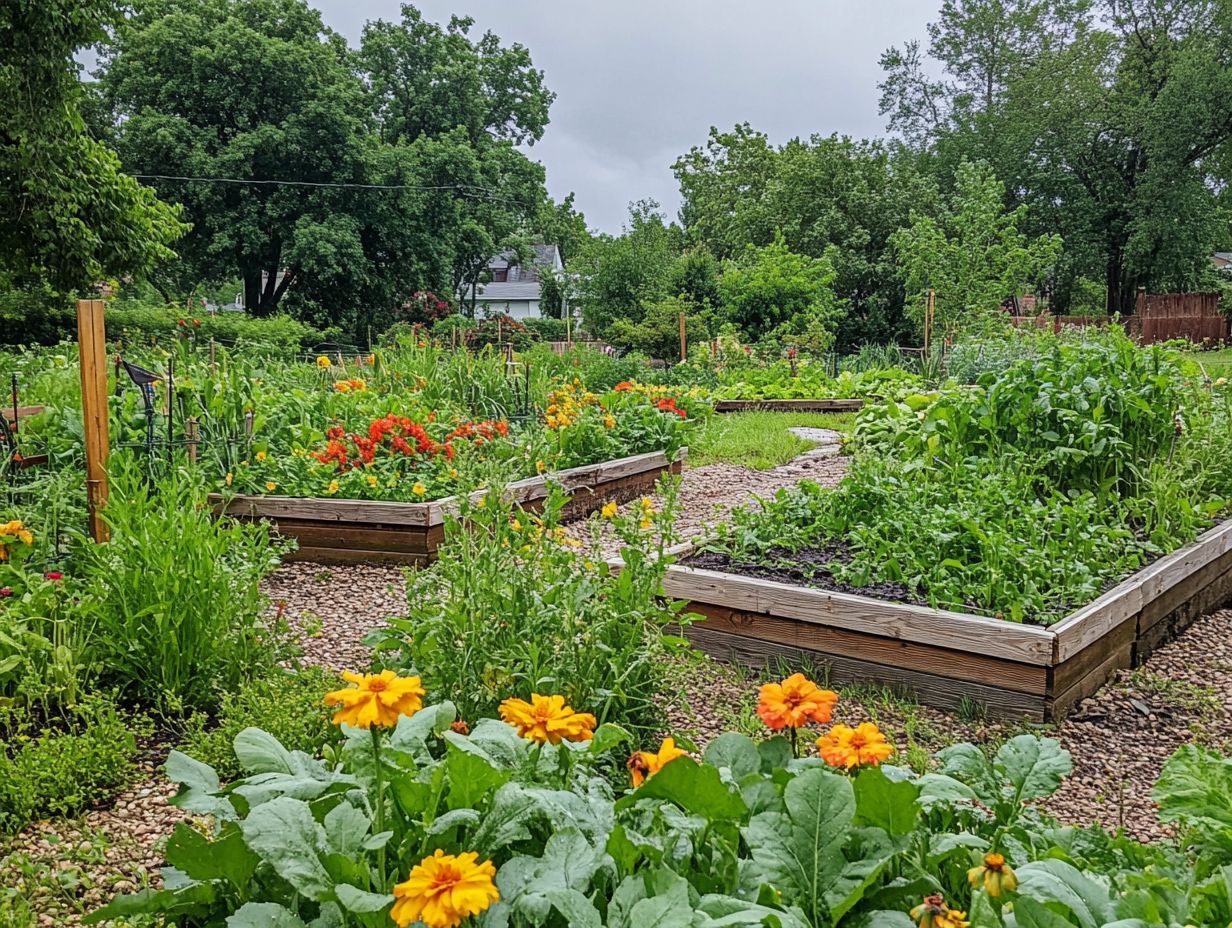
Restoring your garden after a flood requires a thoughtful, various approach centered on effective recovery. Start by evaluating your garden s needs and enhancing soil health. Make informed plant selections that will fortify resilience against future flooding. Using the right recovery methods can significantly speed up your recovery process.
Begin by assessing the damage. Pinpoint areas needing soil amendments to improve structure and fertility.
Introducing organic matter, like compost, will replenish the soil’s nutrient content and improve drainage capabilities. Then, replace any drowned or damaged plants with native species to boost resilience and foster biodiversity, creating a more vibrant ecosystem.
Keep a close eye on your drainage features to ensure water flows as it should. This helps to avoid future complications. Cultivating an environment that supports beneficial insects and a diverse plant community is essential during this recovery phase. This will enhance the overall health of your garden, equipping it to better withstand any challenges that lie ahead.
Maintaining a Flood-Resilient Garden
Maintaining a flood-resilient garden is an ongoing commitment. You need to embrace sustainable practices, ensure meticulous yard maintenance, and continually enrich your soil with organic matter. This commitment is crucial! It helps your garden not just survive, but truly thrive!
This dedication nourishes the overall vitality of your garden.
Tips for Long-Term Maintenance and Protection
For the long-term maintenance and protection of your flood-resilient garden, it s essential to implement effective practices that promote flood protection and enhance soil health. This way, your landscape will be better equipped to withstand future flooding events. Sustainable practices are key to keeping your garden vibrant and thriving.
Regularly inspecting your drainage systems is paramount to prevent water accumulation and ensure adequate flow. By tackling any blockages early, you can significantly reduce the risk of erosion and damage to your plants.
Incorporating organic matter into your soil is another smart move. It enriches the nutrient content while boosting the soil’s ability to absorb moisture, leading to healthier root systems.
Choosing flood-resistant plants can act as a natural barrier against excessive water, further contributing to your garden’s resilience.
These thoughtful strategies work together harmoniously, enhancing your garden s ecosystem and enabling it to flourish even in the face of environmental challenges.
Frequently Asked Questions
What does it mean to have a flood-resilient garden?
A flood-resilient garden is designed and maintained to withstand and recover from flooding. It minimizes damage and reduces the risk of future floods.
Why is it important to create a flood-resilient garden?
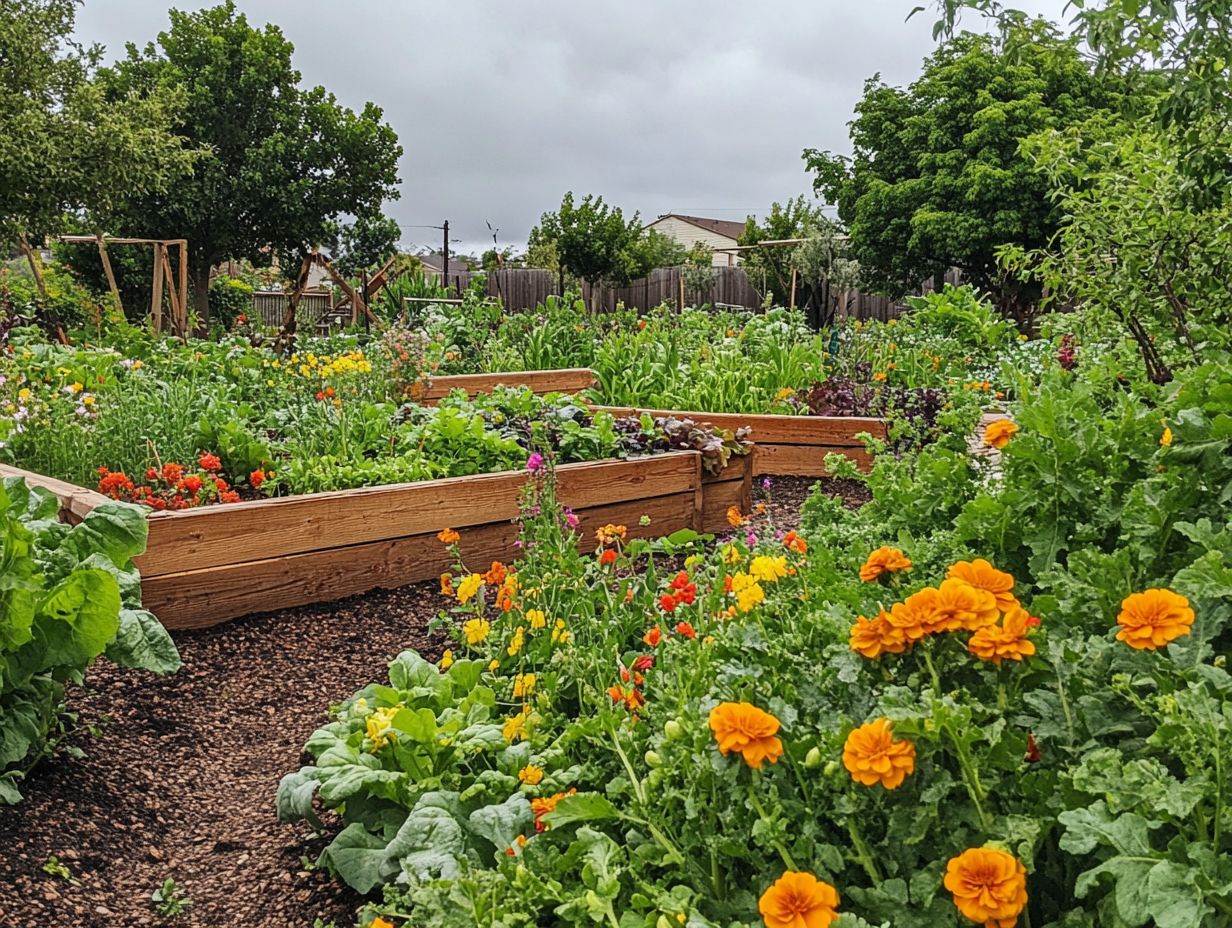
Flooding can cause extensive damage to gardens, ruining plants and structures. By creating a flood-resilient garden, you can protect your garden and minimize the impact of floods.
How can I create a flood-resilient garden?
There are several ways to create a flood-resilient garden, such as choosing flood-tolerant plants, installing proper drainage systems, and elevating garden structures. For more insights on this topic, check out our guide on how to design for resilience in your garden. These measures can help minimize damage and aid in the recovery process after a flood.
What are some flood-tolerant plants that I can use in my garden?
Some flood-tolerant plants include cattails, willow trees, and sedges. These plants have evolved to withstand flooding and can survive in waterlogged conditions for extended periods.
Start your flood-resilient garden today and watch it flourish! Share your own tips or experiences in the comments below!
Do I need to make any changes to my garden’s layout to make it flood-resistant?
Yes, design your garden with sloping terrain. Use raised beds and berms, which are raised areas of soil, to redirect floodwaters away from your plants and structures.
Consider using porous materials for paths and patios. This allows water to seep through, reducing the risk of flooding.
How can I maintain a flood-resistant garden?
Regular maintenance is key. Keep drainage systems clear and monitor plants for signs of stress or damage.
Replace any damaged plants or structures promptly. It s smart to review and update your garden’s flood management plan periodically.

